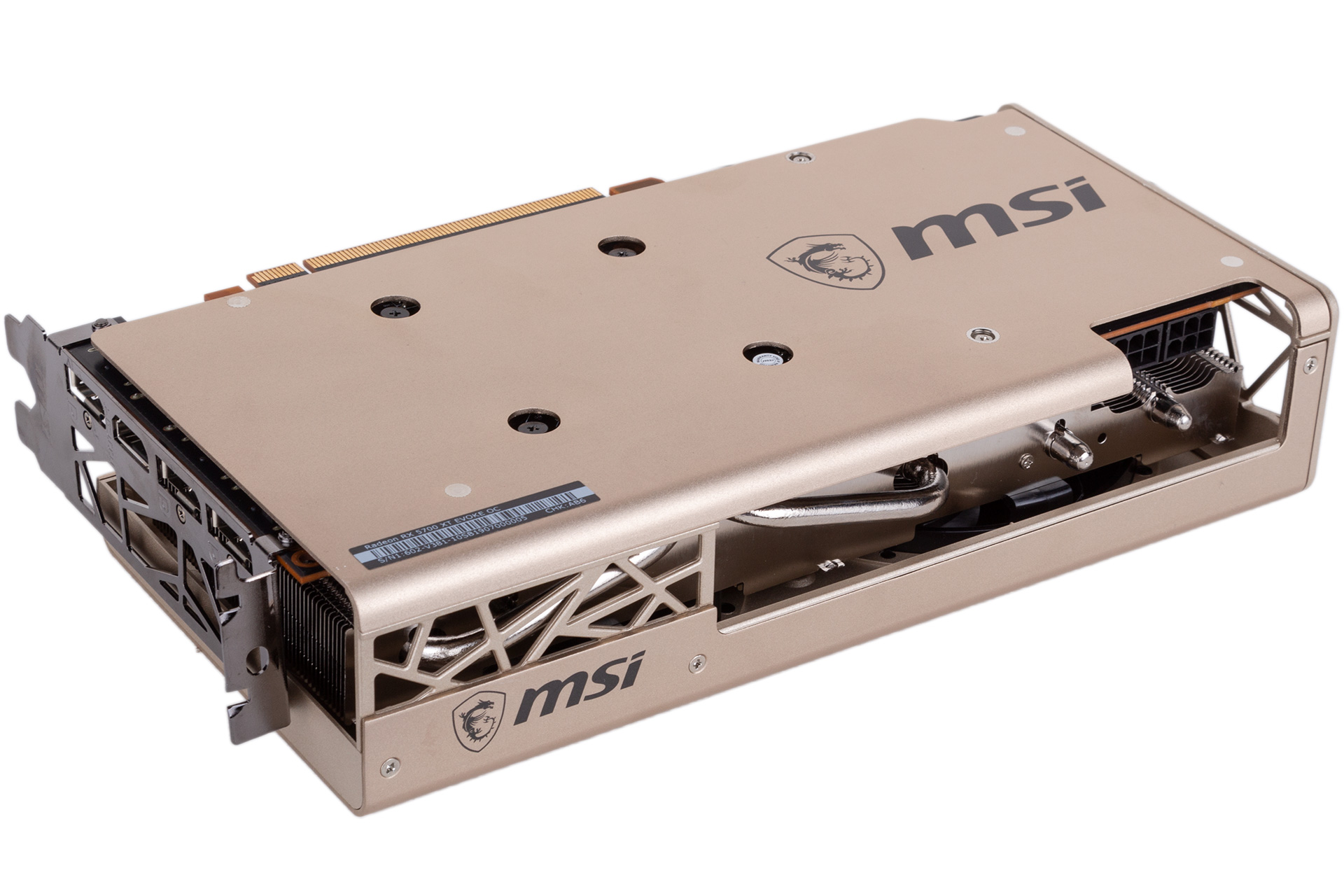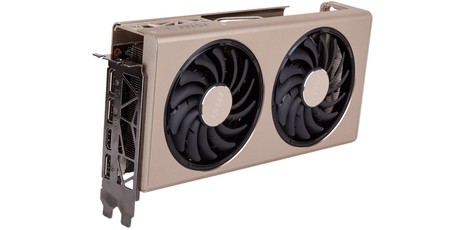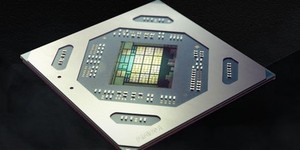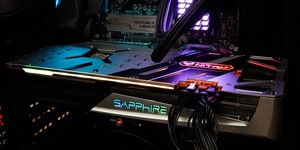Manufacturer: MSI
UK price (as reviewed): £429.99 (inc. VAT)
US price (as reviewed): $429.99 (exc. tax)
In August, we saw the first custom Navi card to cross the bit-tech labs, the Sapphire RX 5700 XT Pulse. Able to cool the GPU well while being significantly quieter and also a touch faster than the shoddy reference card, it largely held up to scrutiny and rebalanced the design nicely. A shame, then, that its $10-higher-than-MSRP somehow translated into a premium of £45 here in the UK, with other EU countries also seeing similar hikes. Stock of the card also seems pretty much non-existent, leaving the door open for other partners to potentially swoop in and steal some thunder.

With that in mind, we present to you the MSI Radeon RX 5700 XT Evoke OC, the first product in a brand new family of graphics cards distinct from the popular Gaming brand (including X and Z variants). In fact, its champagne gold, all-aluminium shroud makes it distinct from anything else on the market. This will no doubt prove divisive; it will be tough to colour-match this to other hardware beyond a small selection of new MSI kit, but for some its uniqueness will surely increase its attractiveness.

Subjective aesthetic assessments aside, an all-metal shroud is always a good thing in our books, and the build quality of this card is high. Although it’s not a unibody shroud, MSI has done a good job of seamlessly curving the front half into the backplate. The more complicated web-like sections are actually made of plastic, but the colour is consistent between the two materials.
MSI takes a similar approach to Sapphire in terms of physical design, with the Evoke OC actually coming in shorter than the reference design at just under 240mm but substantially taller at 129mm, which might pose an issue in a selection of small form factor cases. It also exceeds dual-slot dimensions, so watch out for that too, especially if you plan on mounting your GPU vertically. The card weighs in at nearly 900g as well.
| Name | AMD Radeon RX 5700 XT | Sapphire RX 5700 XT Pulse | MSI RX 5700 XT Evoke OC |
|---|---|---|---|
| Base Clock | 1,605MHz | 1,670MHz (+4%) | 1,690MHz (+5%) |
| Game Clock | 1,755MHz | 1,815MHz (+3.5%) | 1,835MHz (+4.5%) |
| Boost Clock | 1,905MHz | 1,920MHz (+1%) | 1,945MHz (+2%) |
| Dual BIOS | No | Yes | No (only via download) |
| Memory Data Rate | 14Gbps | 14Gbps (+0%) | 14Gbps (+0%) |
| Total Board Power | 225W | ~241W | ~240W |
| Power Connectors | 1x 8-pin, 1x 6-pin | 1x 8-pin, 1x 6-pin | 1x 8-pin, 1x 6-pin |
| Display Connectors | 3x DP, 1x HDMI | 3x DP, 1x HDMI | 3x DP, 1x HDMI |
| Length | 270mm | 258mm | 236mm |
| Height | 110mm | 135mm | 128mm |
| Slots | 2 | 3 | 3 |
| Power Phases | 7(+1)+2 | 7(+1)+2 | 7(+1)+2 |
| LEDs | Yes, red | Yes, red | No |
| Zero RPM Mode | No | Yes | Yes |
| Warranty (UK) | 2 years min. | 2 years | 3 years |
The rated clock speeds (which are indicative of the many-state boost curve rather than absolute values) suggest MSI is using a slightly more aggressive overclock than Sapphire, with the Game Clock coming in at a little under five percent faster than reference. As for the memory, MSI has left it at the stock speed of 14Gbps; we’d prefer to see an overclock here, too, but this is becoming rarer and rarer as a feature on both AMD and Nvidia parts.
There’s sadly no dual BIOS switch on this card, but MSI did make available a Silent BIOS partway through testing. This is now available as a download on the support page for the card, and users must flash the BIOS themselves. MSI assures us the process is covered under warranty, but it’s hardly a user-friendly solution, and as you’ll see it’s not really worth doing anyway. It hard-limits the fan speed to 62 percent, a rather lazy way of going about offering a quieter operating mode.

We’re told to expect a total board power consumption of around 240W, which is in line with the figure given for Sapphire’s overclocked Pulse card and 15W higher than reference. Technically, up to 300W is available to the card thanks to it using a six-pin/eight-pin PCIe power plug combo. Thankfully, these connectors are indented into the shroud, meaning power cables and their connectors won’t add to the already substantial card height.

Display connectors are unchanged from the reference design, with three DisplayPort headers backed up by a single HDMI 2.0b port.

Like Sapphire, MSI leverages a dual-fan cooler design, and its primarily the size of the fans that contribute to the excess height. Larger fans typically shift more air at lower noise levels, and MSI is relying here on its Torx 3.0 fans also seen on premium Gaming X cards. Pleasingly, these fans are semi-passive (cut off point of around 60°C, and this applies to both BIOSes), although AMD’s buggy API continues to report the fans as spinning even when they’re off. You’ll need to disassemble the cooler shroud if you ever need to replace these fans, and they are cable-based rather than using a pin-based quick-connect system like Sapphire does.

The PCB is shorter than the reference and remarkably similar to the Sapphire Pulse card’s one as well. It seems like it’s based heavily on the reference design in terms of layout (but shorter as a result of a different cooling solution). There are seven main GPU power phases plus a single secondary phase for the GPU ASIC, two phases serving the Micron GDDR6 memory, and one final phase delivering voltage to the memory bus.

The aluminium backplate sadly isn’t used to draw heat away from the rear of the PCB. Meanwhile, the primary GPU MOSFETs (not the capacitors or chokes) are directly cooled by a contact plate and thermal pads, and so are the memory modules, with all of these components cooled by the same heatsink as the GPU and thus sharing heat throughout it. The memory pads are on the small side, however, and a couple are completely off-centre; it would be much better to see full-coverage pads. The main copper contact plate and the copper heat pipes are all nickel-plated for consistency.
MSI ships the RX 5700 XT Evoke OC with a three-year warranty, one year higher than Sapphire and many reference models.

MSI MPG Velox 100R Chassis Review
October 14 2021 | 15:04









Want to comment? Please log in.